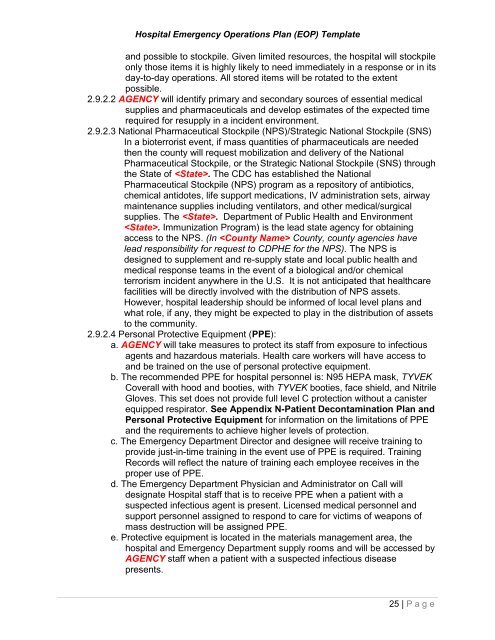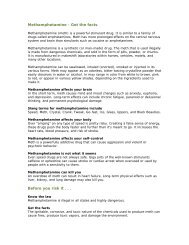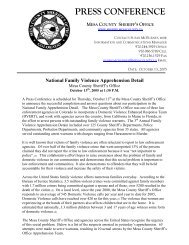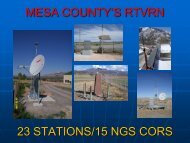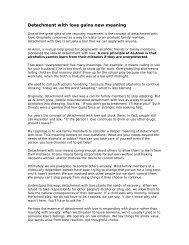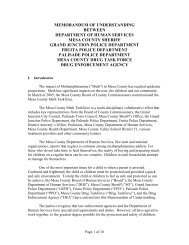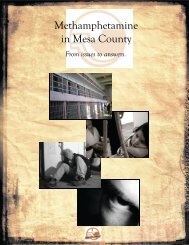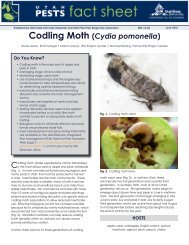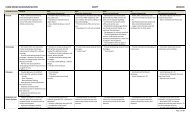Hospital Emergency Operations Plan (EOP) TEMPLATE
Hospital Emergency Operations Plan (EOP) TEMPLATE
Hospital Emergency Operations Plan (EOP) TEMPLATE
Create successful ePaper yourself
Turn your PDF publications into a flip-book with our unique Google optimized e-Paper software.
<strong>Hospital</strong> <strong>Emergency</strong> <strong>Operations</strong> <strong>Plan</strong> (<strong>EOP</strong>) Template<br />
and possible to stockpile. Given limited resources, the hospital will stockpile<br />
only those items it is highly likely to need immediately in a response or in its<br />
day-to-day operations. All stored items will be rotated to the extent<br />
possible.<br />
2.9.2.2 AGENCY will identify primary and secondary sources of essential medical<br />
supplies and pharmaceuticals and develop estimates of the expected time<br />
required for resupply in a incident environment.<br />
2.9.2.3 National Pharmaceutical Stockpile (NPS)/Strategic National Stockpile (SNS)<br />
In a bioterrorist event, if mass quantities of pharmaceuticals are needed<br />
then the county will request mobilization and delivery of the National<br />
Pharmaceutical Stockpile, or the Strategic National Stockpile (SNS) through<br />
the State of . The CDC has established the National<br />
Pharmaceutical Stockpile (NPS) program as a repository of antibiotics,<br />
chemical antidotes, life support medications, IV administration sets, airway<br />
maintenance supplies including ventilators, and other medical/surgical<br />
supplies. The . Department of Public Health and Environment<br />
. Immunization Program) is the lead state agency for obtaining<br />
access to the NPS. (In County, county agencies have<br />
lead responsibility for request to CDPHE for the NPS). The NPS is<br />
designed to supplement and re-supply state and local public health and<br />
medical response teams in the event of a biological and/or chemical<br />
terrorism incident anywhere in the U.S. It is not anticipated that healthcare<br />
facilities will be directly involved with the distribution of NPS assets.<br />
However, hospital leadership should be informed of local level plans and<br />
what role, if any, they might be expected to play in the distribution of assets<br />
to the community.<br />
2.9.2.4 Personal Protective Equipment (PPE):<br />
a. AGENCY will take measures to protect its staff from exposure to infectious<br />
agents and hazardous materials. Health care workers will have access to<br />
and be trained on the use of personal protective equipment.<br />
b. The recommended PPE for hospital personnel is: N95 HEPA mask, TYVEK<br />
Coverall with hood and booties, with TYVEK booties, face shield, and Nitrile<br />
Gloves. This set does not provide full level C protection without a canister<br />
equipped respirator. See Appendix N-Patient Decontamination <strong>Plan</strong> and<br />
Personal Protective Equipment for information on the limitations of PPE<br />
and the requirements to achieve higher levels of protection.<br />
c. The <strong>Emergency</strong> Department Director and designee will receive training to<br />
provide just-in-time training in the event use of PPE is required. Training<br />
Records will reflect the nature of training each employee receives in the<br />
proper use of PPE.<br />
d. The <strong>Emergency</strong> Department Physician and Administrator on Call will<br />
designate <strong>Hospital</strong> staff that is to receive PPE when a patient with a<br />
suspected infectious agent is present. Licensed medical personnel and<br />
support personnel assigned to respond to care for victims of weapons of<br />
mass destruction will be assigned PPE.<br />
e. Protective equipment is located in the materials management area, the<br />
hospital and <strong>Emergency</strong> Department supply rooms and will be accessed by<br />
AGENCY staff when a patient with a suspected infectious disease<br />
presents.<br />
25 | P a g e


